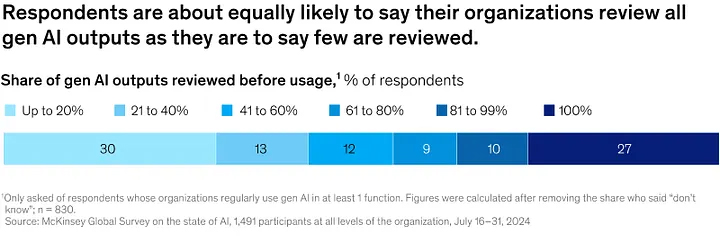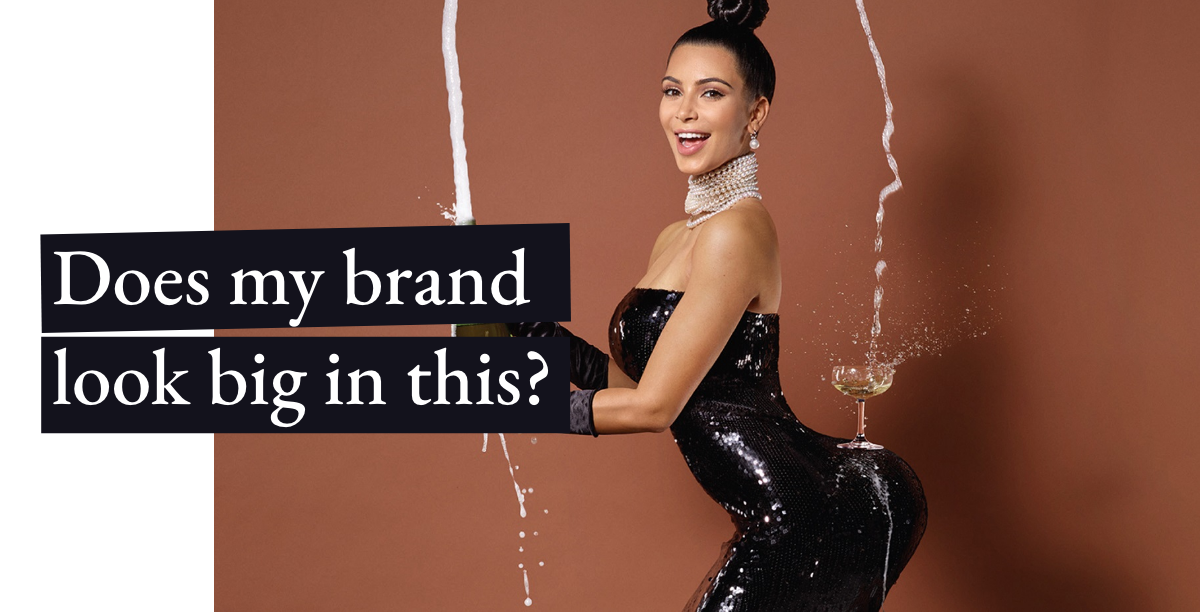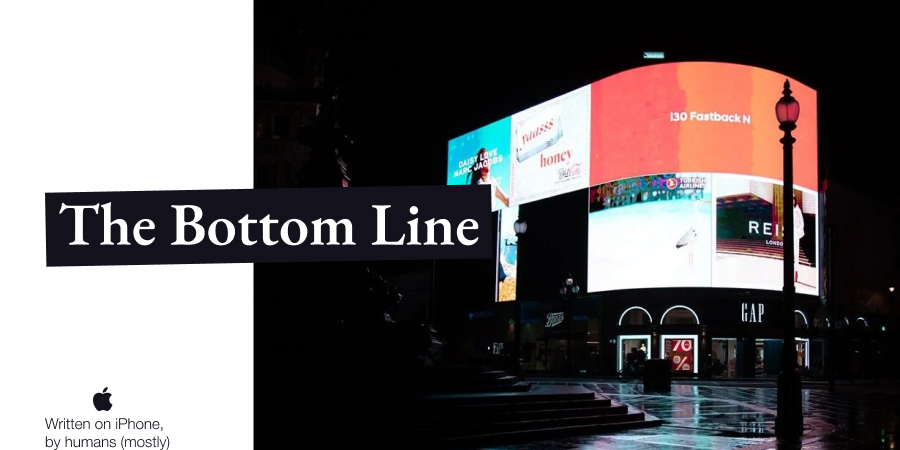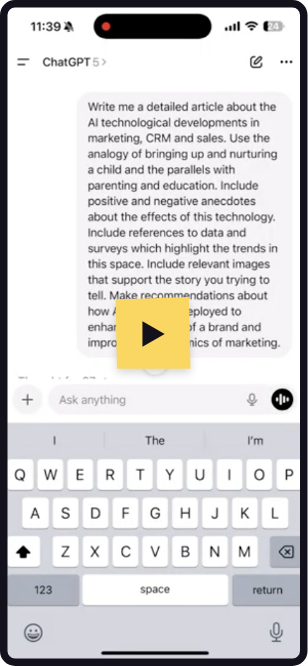
Google’s AI recently produced an ad for a client campaign, totally of its own volition, without any input, briefing, instructions or checks. The client is tightly regulated and the ad breached compliance rules. We had to step in and remove beta versions of the Google campaign management tools (as we have done for other clients’ campaigns). There are numerous reports across the advertising industry of AI creating surprising and unexpected material, media decisions and audience targeting choices.
Big tech believes AI will rule the world. We’re not so sure. Left to run amok, marketing AI risks ruining valuable brands and businesses that have taken years to build. The damage might be much like leaving your cherished children with Elon for the Christmas holidays.
In this article, we discuss why brands can be the most valuable asset a business has and how to harness and manage AI tools to enhance that value. And the dangers of letting technology replace the most basic and developed of human skills: imagination and judgement.
Read to the end and you’ll find ChatGPT’s screen video and Perplexity’s transcript, based on the same brief we used to create this article (we’ve given their work a D minus).

“Chaos is inherent in all compounded things. Strive on with diligence”
attrib. Buddha
Full of youthful promise

In McKinsey’s 2025 global business survey into the use of AI, they report that 42% of organisations interviewed have deployed genAI in marketing and sales functions.
You can read the full report here.
And the American Marketing Association reports over two thirds of marketers are using generative AI at least once per week.

The AMA’s full report is here.
OpenAI reports the daily number of work-related messages using ChatGPT was 213m in June 2024 and 716m a year later. Thanks Open AI. However, despite the explosive growth in deployment and usage, it’s hard to escape reports and surveys that evidence the lack of return from AI investments. The evidence firmly highlights that we are at the very early stages of the experimental phase of working out how to brief, harness and extract value from these tools.
According to S&P Global, a data provider, the share of companies abandoning most of their generative-AI pilot projects has risen to 42%, up from 17% last year.
Thanks The Economist
Creating communications that are distinctive and get cut through, but remain true to your brand’s values, still requires insight, craft and attention to detail. And maybe always will.

Leaving AI without the right inputs, oversight and controls is fraught with risk. In the McKinsey survey, a worryingly high proportion of companies that use AI do not review their AI output.

You reap what you sow

Anyone who has had the privilege of raising children knows that a high-value brand, too, must be patiently nurtured over many years, shaped through imagination, insight and tireless dedication. As a result of the lack of application of skill, judgement and control, generative advertising AI has damaged many brands and businesses. Here are a few examples.
Coca-Cola’s disastrous, AI-generated Christmas 2024 campaign received almost universal criticism for being cold, soulless, fake and representing a “dystopian nightmare”.

Google’s own 2025 Super Bowl ad, promoting Gemini, claimed that “Gouda represented 50%-60% of global cheese consumption”. Thanks The Verge
Mango (the clothing brand) recently ran a campaign using AI generated models and received a severe backlash from its followers.
“If the clothes and the women who wear them don’t exist, then what are they [Mango] really selling”
Thanks New York Post
The Mango CEO had previously hailed faster content generation as a benefit of generative AI. As we have previously written, speed kills.
You can read about the Mango backlash here.
But our favourite misuse of AI has to be from the POTUS himself. In March 2024, Trump posted a fake, headline-grabbing picture, superimposing his image in order to project his persona as a friend of the black population, to boost votes. In May 2025, he used a generated image of himself dressed as the Pope, while the voting for the real Pope was in session. (There blows your writer’s chances of a successful US visa application).

The outrage caused by these images to their respective communities was widely reported. Without human judgement and imagination, the risks of AI destroying brand value are high.
Prepare the child for the road, not the road for the child
There is an expectation that generative AI can perform all of the essential roles required to create and manage a successful brand: researchers, analysts, strategists, planners, campaign managers, art directors, photographers, videographers, copywriters, editors, designers, full-stack developers and post-production engineers. There is also a school of thought that it can replace human expertise, experience and talent, not just in marketing but across sales, service, operations, product design, supply chain management and finance.
In an interview with Bloomberg published in May 2025, Sebastian Siemiatkowski, the boss of Klarna, admitted the company’s heavy reliance on AI in customer service had degraded service quality and that the cost-cutting focus had been too dominant.
Thanks Bloomberg
And because generative AI is mostly trained on what has gone before, our assessment of the large language models highlights that they do not possess imagination, creativity, lateral thinking, irony or humour. They also lack the levels of judgement, rigour or discipline essential to create consistent and authentic brands and campaigns. Like all good creative work, their output needs to be verified, reviewed, evaluated, managed, controlled, enhanced, tailored, refined, touched up, proofed, validated and tested. By a team of talented humans.
As we have written previously, a fool with a tool is still a fool. Generative AI in the wrong hands, or even in no hands, can result in poor output and disastrous outcomes. In the right hands, it can enhance productivity, marketing efficiency and competitive advantage.

The birth of a new breed

Like children born with genius, AI tools and data need to be nurtured, trained, educated, directed and developed. With the right level of focused human capital investment, we see huge opportunity for these tools to help brands become more valuable.
There are hundreds of companies coming into the market with technology targeted at marketing AI augmentation and automation. Summarising all of the publicly announced VC transactions in the sector, we estimate the total value of this investment to be $6.64bn. This would represent roughly 5% of all investment in AI applications at the time of writing. (Sources: Various venture capital fund manager websites, PitchBook, Reuters, Tracxn plus various venture capital media sources – thanks to you all).
This slew of new AI tools is targeted at brand, marketing and sales functions, supporting the important work of data analysis, audience profiling and targeting, content creation, ad generation, testing, marketing automation and customer relationship management.
Marketing AI tools will design, write and create images for ads almost at the touch of a button. Claiming to be relevant, personalised, compelling, distinctive and ultra-targeted, these tools promise to drive awareness, enhance engagement and increase conversion and retention. Ultimately they claim to deliver astonishing levels of ROI.
We at addmustard are constantly seeking out and evaluating many of these tools. Some early stage pioneers that have caught our eye include:
PersuasionXP is an ad generator that aggregates social and search behavioural data to customise ads for specific audiences, based on reasoning and Natural Language Processing (not the NLP used by CIA interrogators).
![]()
Optik AI is a data driven marketing planning and execution tool that automates the process of creating launch marketing plans and activations.
![]()
Peec AI is an advanced tool for measuring how successful your brand, proposition, products and communications feature in the popular generative AI engines.
We’re also testing and scaling client campaigns that incorporate generative AI platforms (ChatGPT, Perplexity, DeepSeek, Gemini etc) as an important channel in the media mix: having your brand, product and content feature in AI-generated results can increase brand visibility, awareness, engagement and trust. It can also significantly reduce the cost of leads and acquisition, by replacing or supplementing paid media traffic (much like the opportunities presented by search engine optimisation).
Ensuring your brand is visible and drives engagement from generative AI engines should now be a fundamental part of your media plans.
Child prodigies

With consumers increasingly preferring AI platforms for researching and comparing product information, insight, prices and reviews, brands have the opportunity to harness this trend by ensuring their communications, services and products are optimised for these tools.
Already, 44 percent of AI-powered search users say it’s their primary and preferred source of insight, topping traditional search (31 percent), retailer or brand websites (9 percent), and review sites (6 percent).
But as we warned in our article “Does my brand look big in this”, the changes AI platforms are ringing that are profoundly affecting the economics of data-driven marketing mean they actually risk driving up marketing costs, reducing revenues and suppressing margins.
Many AI engines search the web to collect and tokenise data from websites, social media content and the behavioural analysis of apps to “work out” what audiences want to hear and what they most respond to. They create, measure, report and optimise marketing campaigns and go-to-market plans. Clever stuff and valuable time saving.
But are these algorithms really up to the job? And if every brand is using them, how will you create unique and authentic communications that will drive a higher propensity of your target customers to buy from you? And allow you to build tangible, measurable value in your brand in order to attract the right growth investment capital, on the best terms?
AI is making major inroads into data collection, reporting and interpretation (e.g. Google’s latest analytics versions) and marketing automation (e.g. PMAX campaign management, also from Google, plus marketing, sales and CRM automation from vendors like Salesforce and Hubspot). But deploying these tools reduces control: of creative work; budget management; media and channel mix and audience targeting. Brands are scrabbling around for answers about attribution, media choices, customer acquisition and growth opportunities. Allowing AI tools to drive both your creative work and the economics of your campaigns can be troublesome.
Nurture versus nature
There is a compelling body of evidence that proves prodigy children born into top quartile income families have a 50%+ higher chance of being a Nobel laureate or creating successful inventions – thanks the Economist / Paul Novosad of Dartmouth College and co-authors
Like children born with genius, AI tools and data need to be nurtured, trained, educated, directed and developed. With the right level of focused human capital investment, we see huge opportunity for these tools to help brands become even more valuable.
The fantastically expensive teenage years

According to Search Engine Land, a popular reporter of digital search media trends, 87% of sectors are seeing higher cost-per-click rates, with some sectors experiencing 60% inflation.
Thanks Search Engine Land
You can read the full report here.

Noticed anything in Google’s shopping ad results recently? We ran search insights analysis for a range of popular products that Amazon sells (including Japanese knife sharpening stones), and most of the time, during July and some of August, there were no Amazon ads anywhere in the results. For a global brand that has historically depended on Google for much of its customer acquisition, this sparked our curiosity to find out why Amazon, Google’s largest advertiser (allegedly spending over $1bn a year), recently stopped marketing on its shopping platform. Our hypothesis is that Amazon could not make the economics of the Gemini version of Google search results work. Owing to AI synopses now dominating search results pages, ads are pushed below Gemini’s results, reducing customer engagement with ad content by around 40%, according to many reports. So has Google raised its click costs to make up the shortfall in clicks and maintain revenue and earnings growth?
You can read the analysis by Search Engine Land of Amazon’s withdrawal from Google here.
Thanks Search Engine Land
They’re never off the payroll

Even the most gifted adolescents and young adults need regular guidance, intellectual nourishment, access to relevant information, creative stimulation and focused development. Left to their own devices, teenagers and young adults are especially vulnerable to maleficent influences.

“My guess is that we’ll have AI that is smarter than any one human probably around the end of next year.”
Thanks Elon Musk, April 2024, on X
Other predictions from Elon have not been the most accurate: we were supposed to be witnessing self-driving Teslas by 2018; a rocket to Mars in 2018 and brain chips implanted into humans in 2021.
AI can automate and augment many marketing processes. But left to its own devices to create, develop or generate new and original ideas, control communications, manage budgets and report accurate performance AI, in all its forms, risks reducing the value of your brand, rather than enhancing it.
We would caution leaving your brand solely in the hands of AI. Or your children with Elon for any extended period.
Get in touch
We have worked with over 50 entrepreneurs over the last decade to create exceptional value in their businesses and brands.
If you’d like to know how to make your business more attractive and valuable, with a unifying, distinctive and compelling brand, consistently underpinning and applied to everything your business does, please get in touch.
We guarantee you’ll be talking to a bold, energetic, precise and sometimes slightly irreverent addmustard human.
And if you’re wondering why brands are as valuable to their businesses as children can be to their parents, you can read our article about how to precisely, tangibly and authentically measure the financial, balance sheet value of your brand here:

And the ChatGPT screen video version of this article is here:
And here is Perplexity’s* transcript text of the article for the same brief (despite Perplexity’s growth in popularity and prominence, we marked this one “D minus”):
*Perplexity is one of the rapidly growing generative AI tools becoming popular with businesses and consumers.
Here is a detailed article about AI technological developments in marketing, CRM, and sales using the analogy of parenting and education, including positive and negative anecdotes, data-backed trends, and recommendations for brand-enhancing deployment of AI.
***
## Nurturing AI in Marketing, CRM, and Sales: A Parent’s Guide to Growing Technology
>Raising a child is an art of patience, guidance, and continuous learning. Similarly, fostering AI technology in marketing, CRM (Customer Relationship Management), and sales is a journey of nurturing innovation, educating tools, and shaping them to serve brands effectively. This analogy draws parallels between the way parents raise children and how businesses can cultivate AI to grow marketing success and sales productivity.
***
### The Early Days: Birth and Infancy of AI in Marketing
Like a newborn needing constant attention and learning, early AI technologies began with simple tasks—automating repetitive work such as sending emails or handling customer queries through chatbots. These “babies” grew quickly; today’s AI systems analyze vast amounts of structured and unstructured data to understand consumer preferences precisely, similar to how parents learn to interpret their child’s unique needs and personality.
AI can predict consumer behavior by analyzing browsing and purchase patterns, enabling hyper-personalization — akin to tailoring education to a child’s strengths and weaknesses. Brands employing AI gain deeper customer insights, allowing them to create targeted campaigns and recommend products with uncanny accuracy.
***
### Positive Anecdotes: Moments of Pride
– **Amazon and Netflix** are classic examples where AI “parenting” has nurtured a sophisticated recommendation engine. These platforms analyze vast data about users’ viewing or shopping habits, improving user satisfaction and loyalty by delivering personalized content and products [1].
– **AI-powered CRMs**, like Salesforce Einstein and HubSpot, act as seasoned caregivers who manage customer relationships seamlessly. They automate data entry, analyze sentiment, and provide sales teams with lead prioritization and personalization—resulting in improved customer engagement and faster sales cycles [2][3].
– A 2025 survey reveals that **88% of marketers use AI daily**, with **81% reporting increases in brand awareness and sales due to AI** [4]. This shows how AI nurtured well becomes an indispensable business asset.
***
### Challenges and Negative Anecdotes: The Tantrums of Technology
Yet, just as parenting involves handling tantrums, AI imbues challenges and risks:
– The rapid pace of change can overwhelm marketing teams—with over **50% feeling overwhelmed by the speed of AI advancements** and fears about AI replacing creative roles [5].
– Some marketers admit they don’t know how to **maximize AI’s value or use generative AI safely**, reflecting the “learning curve” akin to parents navigating uncharted territory [4].
– Ethical concerns arise too, such as **privacy breaches and biased algorithms in CRM systems**, requiring careful supervision similar to teaching children right from wrong [2].
– In some cases, reliance on AI has led to generic messaging and reduced human touch, alienating customers who value authentic interactions—a digital “neglect” the brand must avoid [6].
***
### Growth and Education: The Learning Phase of AI
Developing AI is like educating a child—training it with quality data and feedback:
– Successful AI adoption depends on **training teams effectively and ethical AI management** to prevent bias and protect customer data. Many companies still lack sufficient training, underscoring the need for ongoing education investment [4][2].
– Marketers are leveraging **generative AI to enhance content creation**, freeing human teams to focus on strategy and emotional connection, much like helping a child become independent yet grounded [7][8].
– AI’s ability to automate routine tasks while generating insights about customer journeys enables brands to adapt and grow faster, similar to how children thrive when given the right environment and resources [1].
***
### Data and Surveys Highlighting Trends
– The AI marketing market is valued at **$47.3 billion in 2025**, projected to exceed **$107 billion by 2028**, growing at a CAGR of 36.6% [4].
– **92% of businesses intend to invest further in generative AI tools within three years**, indicating AI’s role as a core growth driver [4].
– Generative AI may boost marketing productivity by **5 to 15% of total marketing spend** and increase sales productivity by **3 to 5% globally** through improved lead generation and nurturing [9].
– Yet, only **1% of businesses have fully recovered their AI investment**, highlighting risks and the need for careful “parenting” of the technology [4].
***
### Recommendations to Enhance Brand Value and Marketing Economics
1. **Educate and Empower Teams**: Just as parents invest in their child’s education, brands must provide comprehensive AI training and ethical guidance to marketing teams to leverage AI’s full potential safely [4].
2. **Balance Automation with Human Touch**: AI should handle routine tasks and data analysis, allowing human marketers to focus on creativity and emotional connections, maintaining authenticity [6].
3. **Implement Ethical AI Practices**: Monitor AI algorithms for bias and privacy compliance to build trust and safeguard brand reputation, similar to instilling good values in children [2].
4. **Leverage Hyper-Personalization Responsibly**: Use AI to deliver timely, relevant content and recommendations, but avoid overwhelming or alienating customers with over-automation [1][6].
5. **Invest in Data Quality and Integration**: Quality “nutrition” for AI systems ensures accurate insights and predictions. Integrate AI tools deeply with existing martech stacks for seamless operations [2].
6. **Measure ROI and Iterate**: Track AI’s impact on marketing KPIs rigorously and adapt strategies for continuous improvement, akin to adjusting parenting styles as the child grows [9].
***
### Visual Support Suggestions
– Illustration of a child growing stages (infant to teenager) analogized to AI evolution stages.
– Data graph showing AI marketing market growth (2025 to 2028).
– Side-by-side image of a human marketer collaborating with AI tools.
– Chart of benefits vs challenges in AI marketing adoption.
– Survey data infographic on marketer sentiments toward AI.
***
AI in marketing, CRM, and sales is much like raising a child: demanding, transformative, and full of potential. When nurtured with care, education, and ethics, AI can grow to become a trusted partner in delivering personalized, efficient, and impactful marketing that elevates brand value and improves economic outcomes. However, neglecting its challenges risks alienation, loss of creativity, and ethical pitfalls. Mastering this balance will define the future success of brands in an AI-driven era.
***
If you would like, visuals can be created or sourced for the suggested images to further enhance this article.
Citations:
[1] AI Will Shape the Future of Marketing https://professional.dce.harvard.edu/blog/ai-will-shape-the-future-of-marketing/
[2] Top AI-Integrated CRMs for B2B Sales in 2025 https://saleshive.com/blog/b2b-sales-ai-crms-integrations-know-2025/
[3] Top 5 AI-Powered CRM Tools in 2025 | – RT Labs https://www.rtlabs.co.uk/blog/slugtop-5-ai-powered-crm-tools-2025
[4] 50+ AI Marketing Statistics in 2025 https://www.seo.com/ai/marketing-statistics/
[5] AI is marketing’s biggest 2025 trend – also its biggest fear https://www.prolificnorth.co.uk/news/ai-is-marketings-biggest-2025-trend-also-its-biggest-fear-new-report-reveals/
[6] The Pros and Cons of AI in Marketing https://zenmedia.com/blog/ai-in-marketing/
[7] How AI will transform digital marketing in 2025 https://www.generateuk.co.uk/resources/how-ai-will-transform-digital-marketing-in-2025/
[8] 5 AI Marketing Trends to Watch in 2025 (+How They’ll … https://www.wordstream.com/blog/ai-marketing-trends-2025
[9] Economic potential of generative AI https://www.mckinsey.com/capabilities/mckinsey-digital/our-insights/the-economic-potential-of-generative-ai-the-next-productivity-frontier
[10] What are the Digital Marketing Trends for 2025? https://digitalmarketinginstitute.com/blog/digital-marketing-trends-2025
[11] McKinsey technology trends outlook 2025 https://www.mckinsey.com/capabilities/mckinsey-digital/our-insights/the-top-trends-in-tech
[12] The Impact of Artificial Intelligence on Marketing https://www.griffith.ie/blog/the-impact-of-artificial-intelligence-on-marketing
[13] AI In Marketing Statistics: How Marketers Use AI In 2025 https://uk.surveymonkey.com/mp/ai-marketing-statistics/
[14] Artificial intelligence (AI) applications for marketing https://www.sciencedirect.com/science/article/pii/S2666603022000136
[15] AI Marketing Trends in 2025 https://www.smartinsights.com/digital-marketing-strategy/ai-marketing-trends-2025/
[16] AI Is Transforming Productivity, but Sales Remains a New … https://www.bain.com/insights/ai-transforming-productivity-sales-remains-new-frontier-technology-report-2025/
[17] AI-powered marketing: What, where, and how? https://www.sciencedirect.com/science/article/pii/S0268401224000318
[18] 10 Eye Opening AI Marketing Stats in 2025 https://digitalmarketinginstitute.com/blog/10-eye-opening-ai-marketing-stats-in-2025
[19] AI is turning the ad business upside down https://www.economist.com/business/2025/06/18/ai-is-turning-the-ad-business-upside-down
[20] 26 best AI marketing tools I’m using to get ahead in 2025 https://www.marketermilk.com/blog/ai-marketing-tools









